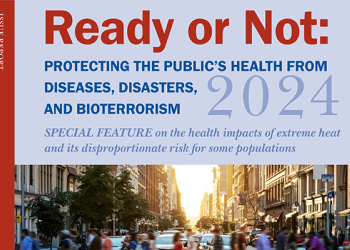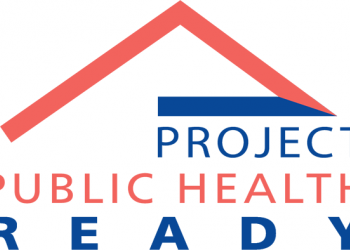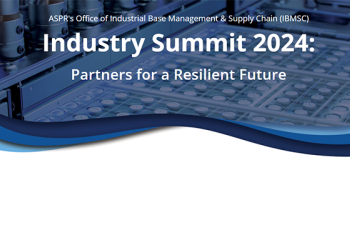As has been repeated throughout STD Awareness Month, the rates of the three reportable STDs (syphilis, gonorrhea, and chlamydia) are on the rise. And that includes rates of congenital syphilis—spread from a pregnant person to their fetus—which have more than doubled in the last four years to 918 reported cases in the most recent data from 2017. Chlamydia, gonorrhea, and syphilis are curable with the right medicines, yet most cases go undiagnosed and untreated and can lead to severe health problems that include infertility, ectopic pregnancy (pregnancy outside the womb), stillbirth in infants, and increased HIV risk.
Anyone who has sex can get an STD, but some groups are more affected than others: young people aged 15-24, gay and bisexual men, and pregnant women. Prior studies suggest a range of factors may be at play – from socioeconomic challenges, like poverty, to issues of stigma and discrimination. As Gail Bolan, MD, Director of the CDC’s Division of STD Prevention (DSTDP) says, “Across the nation, these data mean our work is more important than ever – and we can all get involved. CDC and other federal organizations, community leaders, health departments, community-based organizations, health care providers, and individuals can all take action at work, in our schools and communities, and at home to make a difference.”
 In this, our final post for STD Awareness Month 2019, we wanted to highlight the strategy of “Talk. Test. Treat.” Local health departments (LHDs) can use and promote these three simple actions to help address rising STD rates: talking about STDs with their communities, patients, and healthcare providers; ensuring everyone knows who should be tested and when and where; and the important role that both healthcare providers and patients play in making sure that STDs are treated correctly.
In this, our final post for STD Awareness Month 2019, we wanted to highlight the strategy of “Talk. Test. Treat.” Local health departments (LHDs) can use and promote these three simple actions to help address rising STD rates: talking about STDs with their communities, patients, and healthcare providers; ensuring everyone knows who should be tested and when and where; and the important role that both healthcare providers and patients play in making sure that STDs are treated correctly.
LHDs have a special role in “Talk. Test. Treat.” In some cases, LHDs are the healthcare provider. In all cases, they play a critical role in educating their communities about rising rates of STDs, the important measures to take to avoid them, and how to discuss these topics with partners, patients, and providers. LHDs also inform the public and their communities’ providers about the need to test and get tested and the treatments available. Further, LHDs must ensure that they and other healthcare providers:
- Provide the best care by talking with patients about sexual health and safe sex practices.
- Test patients as recommended by CDC.
- Follow CDC’s STD Treatment Guidelines to make sure patients get successful treatment and care. CDC offers a free app for Apple and Android, so that the guidelines can be accessed from anywhere.
Additionally, to incorporate “Talk. Test. Treat.” into their healthcare routine, LHDs can inform their community so that individuals can:
- Talk openly with partner(s) and healthcare providers about sex and STDs.
- Get tested. Because many STDs have no symptoms, getting tested is the only way to know for sure if there is an infection.
NACCHO has undertaken a number of activities to support LHDs in educating their communities and providers about having open conversations about STDs to assure that the appropriate testing (including extragenital testing) and treatment is provided. Currently, NACCHO oversees a project, in cooperation with the CDC’s Division of STD Prevention, on operationalizing the forthcoming CDC recommendations on STD clinical services to help LHDs assess their clinical service provision. NACCHO has also developed resources to increase the capacity of LHDs to work in collaboration with school districts and others in their communities to address adolescent sexual health care needs. Additionally, in October 2018, NACCHO’s Board of Directors passed a comprehensive policy statement on addressing sexually transmitted infections. The policy statement identifies numerous actions that could be taken by LHDs, in collaboration with communities and local providers, to address STDs. It also encourages other entities, including the federal government, to work with and in support of LHDs on such efforts.
If you’d like to promote “Talk. Test. Treat.” in your communities, use these sample social media messages:
- #STDMonth is here! Learn how these 3 steps can prevent #STDs: #TalkTestTreat —> https://go.usa.gov/xE6qWExternal
- Spread the word: #STDs CAN be prevented if you #TalkTestTreat during #STDMonth & all year long: https://go.usa.gov/xE6qKExternal
- Everyone should talk about #sexualhealth & #STDs during #STDMonth and all year long: https://go.usa.gov/xE6q8External #TalkTestTreat
- All #STDs can be treated and some can be cured: https://go.usa.gov/xE6qmExternal #STDMonth #TalkTestTreat
- Prevent #STDs during #STDMonth and all year with 3 steps: #TalkTestTreat https://go.usa.gov/xE6qwExternal
- You’re only 3 steps away from improving your health, your partners’ health, and your patients’ health: https://go.usa.gov/xE6q7External #TalkTestTreat #STDMonth








